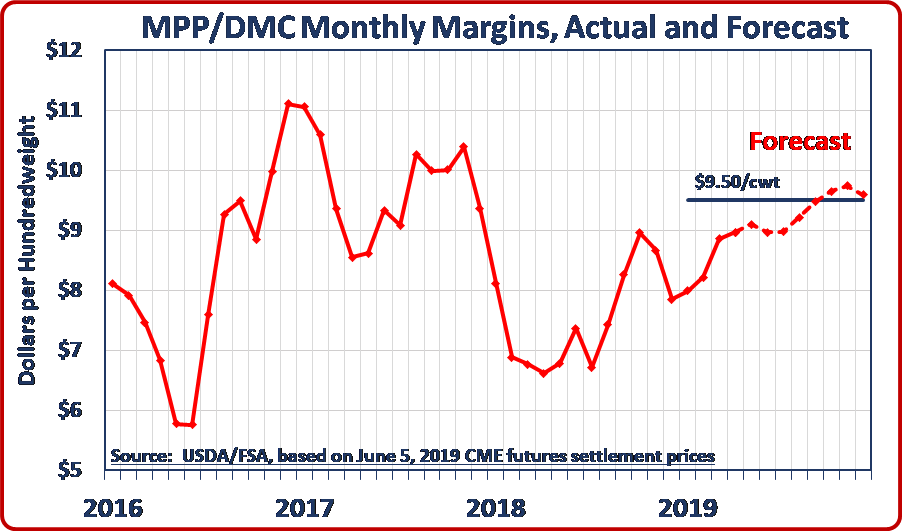ARLINGTON, VA – The U.S. dairy industry is urging Congress to quickly ratify the U.S.-Mexico-Canada Agreement (USMCA) with an outreach campaign highlighting the importance of the agreement to the success of America’s dairy farmers and manufacturers.
In a letter sent to representatives of top-producing dairy states, the U.S. Dairy Export Council (USDEC), the National Milk Producers Federation (NMPF), and the International Dairy Foods Association (IDFA) detail how provisions of USMCA positively impact the U.S. dairy industry. The timely resolution of ongoing trade disputes and negotiations is critical to growing the dairy sector’s international market share as well as maintaining credibility with U.S. trading partners. Therefore, the dairy community is asking Congress for immediate passage of this important trade agreement.
The organizations write:
“On behalf of the dairy farms and businesses in your district, please pursue a USMCA vote without delay by working to resolve any outstanding issues as swiftly as possible and then quickly ratify the trade deal to send a clear message to the world that America still values fair trade and robust trade partnerships with our allies.”
“Solidifying and expanding trade opportunities abroad through USMCA will improve the prospects of dairy farms here at home,” said Jim Mulhern, president and CEO of NMPF. “In the midst of uncertainty surrounding our trade relationships and yet another year of meager milk prices, the United States lost an average of seven dairy farms a day in 2018. The passage of USMCA will instill a renewed sense of optimism in our dairy farmers.”
With approximately 16 percent of the U.S. milk supply exported annually, strengthening trading relationships and expanding international market opportunities is vital to the financial well-being of the U.S. dairy industry. USMCA preserves U.S. dairy sales to Mexico, the U.S. dairy industry’s largest foreign customer, while increasing market access in Canada and tackling nontariff barriers that can hinder exports.
“It is time for Congress to swiftly pursue a USMCA vote by working closely with the Administration to resolve outstanding concerns and then quickly ratify this agreement to bring USMCA across the finish line,” said Tom Vilsack, president and CEO of USDEC. “The successful resolution of the Section 232 retaliatory tariffs helped pave the way for this critical trade agreement; while we work together to secure its passage Congress must also stand against the imposition of any additional tariffs that could jeopardize forward progress.”
Michael Dykes, President and CEO of the International Dairy Foods Association said, “On behalf of our dairy industry which pumps $620 billion into the U.S. economy each year, we are making a strong appeal to Congress to vote to ratify USMCA now. To pave the way for USMCA ratification, we ask the Administration to restore a market principled approach to trade –transparent, rules-based and predictable for our North American trading partners. The time has come to focus on what’s important to our economy—maintaining American jobs, growing U.S. export markets, and restoring America’s reputation as a reliable supplier.”
Passage of USMCA would bring a much-needed lift to the United States dairy industry with the U.S. International Trade Commission estimating $277 million in increased sales to our North American partners once the agreement is fully implemented.
###
About NMPF
The National Milk Producers Federation (NMPF), based in Arlington, Va., develops and carries out policies that advance the well-being of U.S. dairy producers and the cooperatives they collectively own. The members of NMPF’s 30 cooperatives produce the majority of the U.S, milk supply, making NMPF the voice of nearly 32,000 dairy producers on Capitol Hill and with government agencies. For more on NMPF’s activities, visit www.nmpf.org.
About USDEC
The U.S. Dairy Export Council (USDEC) is a non-profit, independent membership organization that represents the global trade interests of U.S. dairy producers, proprietary processors and cooperatives, ingredient suppliers and export traders. Its mission is to enhance U.S. global competitiveness and assist the U.S. industry to increase its global dairy ingredient sales and exports of U.S. dairy products. USDEC accomplishes this through programs in market development that build global demand for U.S. dairy products, resolve market access barriers and advance industry trade policy goals. USDEC is supported by staff across the United States and overseas in Mexico, South America, Asia, Middle East and Europe. The U.S. Dairy Export Council prohibits discrimination on the basis of age, disability, national origin, race, color, religion, creed, gender, sexual orientation, political beliefs, marital status, military status, and arrest or conviction record
About IDFA
The International Dairy Foods Association (IDFA), Washington, D.C., represents the nation’s dairy manufacturing and marketing industry, which supports nearly 3 million jobs, generates more than $39 billion in direct wages and has an overall economic impact of more than $628 billion. IDFA is the umbrella organization for the Milk Industry Foundation (MIF), the National Cheese Institute (NCI) and the International Ice Cream Association (IICA). IDFA’s members range from large multinational organizations to single-plant companies. Together they represent more than 85 percent of the milk, cultured products, cheese, ice cream and frozen desserts produced and marketed in the United States and sold throughout the world. The diverse membership includes numerous food retailers, suppliers and companies that offer infant formula and a wide variety of milk-derived ingredients. Visit IDFA at www.idfa.org.







